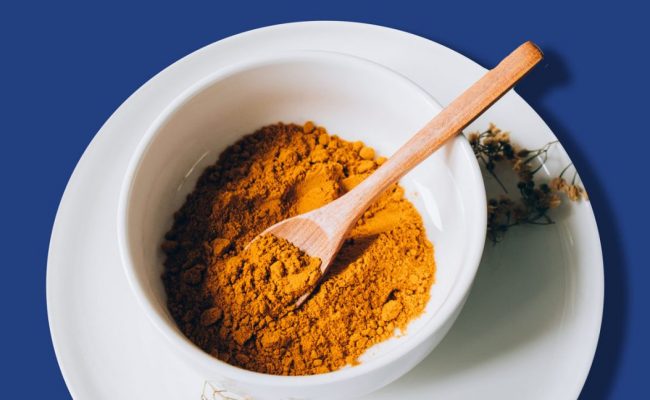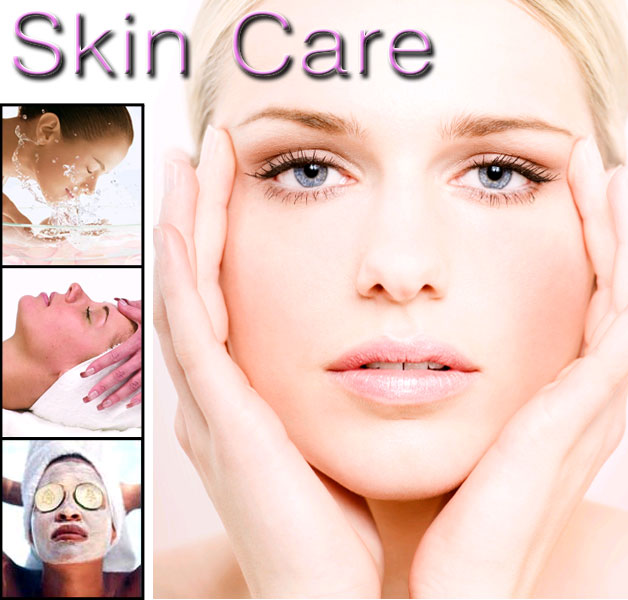Using turmeric for skin care
- Posted on
- Comment

Reading the ingredient list on the back of your face wash or foundation bottle is probably enough to scare you into joining the clean beauty craze.
One of the break out (no pun intended) stars in the natural beauty movement is the easily pronounceable turmeric. Turmeric is a spice used in Indian food and in healing.
Does it work?
This sunset-yellow spice, scientifically known as Curcuma longa, has anti-inflammatory, antimicrobial, and antioxidant properties that can help to:
- heal wounds
- prevent breakouts (and lessen active ones)
- fight eczema and psoriasis
- reduce acne scarring
- brighten dark circles
- bring out your natural glow
Though it may be a relatively new skin treatment in the Western world, turmeric has racked up centuries of street cred as an Indian health treatment for a number of skin and body issues.
More research is needed tighteno determine the best methods for applying it, but here’s what we know so far.
Tumeric for skin lightening
A triple shot of espresso can work wonders on your brain, but not so much for under-eye shadows. After your next all-nighter, try turmeric!
A recent study found that turmeric essential oil in a lotion formulation can brighten skin within three weeks with results that last just as long.
These glowing benefits are likely the result of powerful antioxidants and anti-inflammatory compounds working together to heal and bring out the natural health of skin.
DIY Turmeric Lotion
Add a few drops of turmeric essential oil to a cream or oil-based moisturizer (such as argan oil) and use it as you would your regular moisturizer.
Tumeric to slow hair growth
The same study found that turmeric may help slow unwanted hair growth.
Curcuma oil, from the same family as turmeric, was applied on the underarm of 60 women for 10 weeks. The study found that the oil reduced or slowed hair growth on the tested area.
The time it takes likely depends on the texture of your hair, as thinner hair will react more quickly than coarse hair. Expect turmeric oil to work less dramatically than waxing or shaving.
Turmeric facial hair remover from urban Gyal
- Combine ½ cup cold milk, ½ cup flour, 2 tablespoons turmeric powder, and 1 tablespoon sea salt (leave out if you have eczema or are prone to dry skin), mixing until it forms a sticky paste.
- Apply the paste to the area where you’d like to stop hair growth.
- Let it dry for ten to fifteen minutes. The mask will start to crumble off as it dries.
- Rinse with warm water and pat dry with a washcloth.
Pro tip: if the turmeric stains your skin yellow, use witch hazel or apple cider vinegar to remove it!0 seconds of 0 secondsVolume 0%
Tumeric to soothe psoriasis
Psoriasis is an autoimmune disease in which inflammation causes skin cells to build upon each other, creating scaly patches that are prone to cracking and bleeding.
Curcumin, the primary active compound found in turmeric, contains anti-inflammatory enzymes that can combat cell production and reduce these uncomfortable skin patches.
Studies have shown that both topical and oral curcumin can improve symptoms of plaque psoriasis in 9–12 weeks.
Nighttime topical turmeric paste for psoriasis
- Mix one part turmeric powder with two parts water.
- Simmer in a saucepan until the mixture thickens into a paste.
- Once cooled, apply the paste to the affected area.
- Wrap a piece of gauze around the treated area.
- Leave it on overnight.
- In the morning, remove the gauze and rinse your skin with warm water.
Turmeric tea
- Add 1 teaspoon of ground turmeric to 4 cups of water and bring to a boil.
- Simmer for 10 minutes and serve (add honey and/or lemon to taste).
Be sure to consult your doctor before trying any at-home psoriasis remedies, turmeric-related or otherwise!
Tumeric to fade acne scarring
Turmeric can help fade the acne scars of your hormonal youth. The jury’s still out on its ability to erase the emotional pain!
Still struggling with acne? Not only will the anti-inflammatory properties of turmeric help, but so will its antibacterial properties.
Acne is commonly caused by the bacteria Propionibacterium acnes. This is typically treated with antibiotics, which are becoming less effective as a result of drug resistance.
But a 2013 study suggests curcumin combined with lauric acid is an effective way to combat acne-causing bacteria.
You can use turmeric powder in combination with many skin-healthy DIY face mask ingredients, such as honey, apple cider vinegar, yogurt, or aloe.
You can also purchase turmeric essential oil. Essential oils are very concentrated and must be diluted in a carrier oil before applying to the skin.
Essential oils are not meant to be swallowed. Choosing the herb in powder form makes recipes easier.
Turmeric face mask for clearer skin
- Mix 1 tablespoon raw honey with 1 teaspoon turmeric powder.
- Add a few drops of lemon juice if desired.
- Mix into a thick paste and apply to skin.
- Rinse with warm water after 10 to 15 minutes.
Tumeric to combat sun damage and signs of aging
UV rays are your skin’s worst enemy — they cause sunburns, skin cancer, fine lines, hyperpigmentation, and wrinkles. But turmeric may help you turn back the clock, in a manner of speaking.
A recent study found that turmeric’s antioxidant compounds significantly improved sun damage in rat skin, a possible early indication for the potential to slow the effects of aging in humans.
Antioxidants prevent free radicals like pollution and UV rays from affecting your skin’s elasticity — the quality that keeps your skin feeling soft and supple.
Most importantly, turmeric blocks the enzyme elastase, which attacks your skin’s ability to produce elastin — a substance which gives your skin structure.
If elastase is left unchecked, your body can’t produce the proteins it needs to keep your skin flexible, leading to wrinkles.
Turmeric night serum by Soulflower
- Mix 4 tablespoons aloe vera gel with 10 drops turmeric essential oil and 1 teaspoon argan oil.
- Apply to face before bed time.
- Wash in the morning.
Be sure to do an allergy patch test before you leave turmeric essential oil on your skin overnight.
Tumeric to heal wounds
When you get injured, your body’s natural response is to send white blood cells and healing enzymes to the wound to stave off infection — this is what causes inflammation.
While that sounds like a good thing, it also causes the not-so-beneficial effects of heat, redness, and pain.
Turmeric counteracts this response, fighting inflammation and oxidation to calm the swelling and make those wounds a little less angry.
Turmeric also speeds up the skin’s ability to form new, healthy tissue. It boosts collagen production too, meaning your injury heals faster and scars less.
- Combine 2 teaspoons turmeric powder with water or coconut oil until it becomes a thick paste.
- Apply to cleansed wound and cover with a bandage for up to 24 hours.
Tumeric to treat scabies
Even bugs are no match for turmeric.
Scabies is an infestation of the mite Sarcoptes scabiei, which burrows under your skin and — if left untreated — can lay eggs. The result is an itchy, rash-like irritation on your skin.
Scabies is typically treated with a prescription cream and hydrocortisone lotion, but a 2011 study from India showed that the combination of turmeric and neem (the extract from a native Indian tree) was 97 percent effective in curing scabies.
Turmeric parasite cleanse
- Consult your doctor before trying any new supplements or if you’re concerned about possible parasites.
- Take one 500 mg turmeric tablet once a day and add turmeric to your food regularly.
- Be sure to use a turmeric that includes piperine or black pepper extract. This enhances the absorption of curcumin.
Tumeric to treat other skin conditions
Turmeric’s anti-inflammatory and free-radical-fighting properties have made it a topic of study for countless skin issues, but the extent of its health benefits are still being researched.
Along with the issues mentioned above, studies show that turmeric may also be beneficial in treating:
- stretch marks
- dry skin
- skin cancer
- scleroderma
- vitiligo
But will it make me grow three heads?
As far as side effects go, the most obvious consequence of topical turmeric is skin staining. There’s a reason turmeric shows up in recipes for bright yellow curries and other vibrant dishes.
Unless you want to turn your face into tikka masala, don’t leave it on your skin too long. But luckily, even if you do, it isn’t permanent and a good exfoliator should remove the stain.
Make sure you’re not allergic to turmeric before using it topically. Patch test any turmeric-based skin treatment by applying a small portion to your inner arm or wrist and covering it with a bandage for 24 hours.
If you experience any itching, burning, or other irritation, cleanse the area immediately and stop using the treatment.
If you’re taking iron supplements or blood thinners, use oral turmeric treatments with caution, as the spice is known to make you bleed more easily.
High doses of turmeric (more than 4,000 mg per day) may also cause digestive issues like nausea or diarrhea, headaches, and rashes.
Keep in mind that turmeric has low bioavailability, which means there’s a limit to how much of it your body can absorb.
The Long and Short of it
If you’re looking for a natural skin treatment that you can find on the shelves at your local grocer, look no further.
Turmeric has positive research backing its ability to reduce inflammation and speed healing, which is beneficial for both medical and cosmetic purposes. Use it in powder form or as an essential oil.
-Greatist







 (Selorm) |
(Selorm) |  (Nana Kwesi)
(Nana Kwesi)